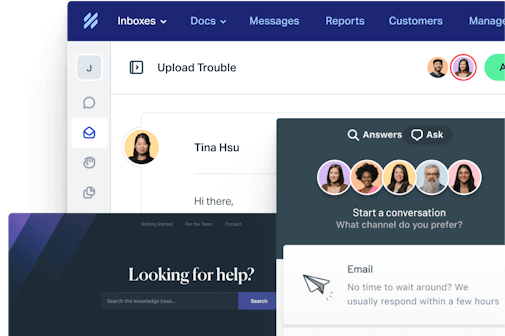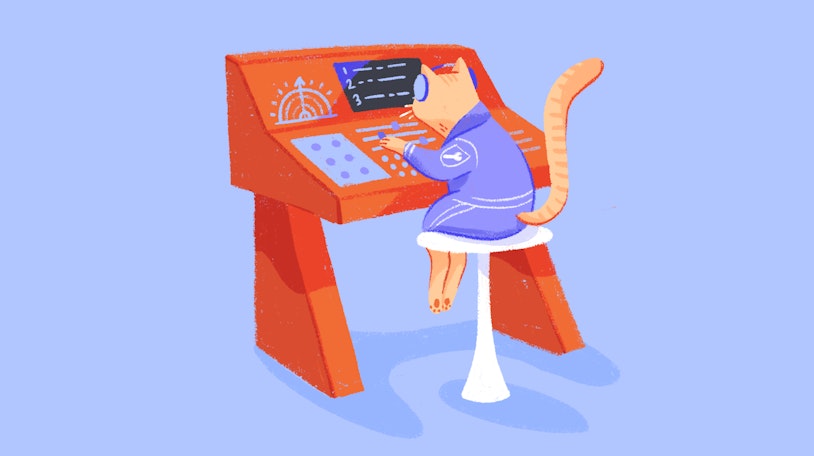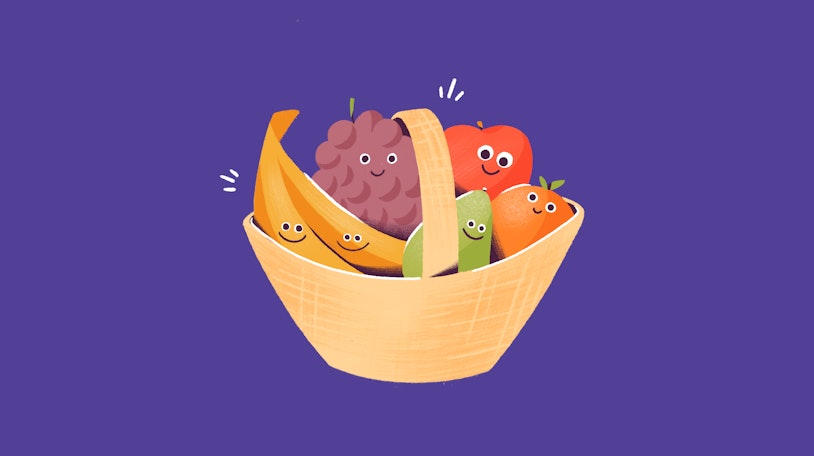In every organization, whether you sell directly to consumers or to other businesses, customer experience has the power to make or break the bottom line.
Business to consumer (B2C) customer service may differ from its business to business (B2B) counterpart, but it still plays a massive role in building customer loyalty and happiness and generating ongoing revenue.
In this blog post, we’ll explore what B2C customer service is, how it differs from B2B customer service, and some of the best tips for doing it well.
What is B2C customer service?
B2C refers to the type of relationship that the seller (business) has with its buyer (consumer). Unlike a business to business (B2B) company, B2C companies sell directly to their consumers rather than to large groups (typically other companies or businesses).
There are a few different types of B2C businesses:
Direct sellers
Direct sellers are perhaps the most common model of B2C companies. A direct seller could be a local business, such as the hardware store down the street from your house, or it could be an online storefront, such as that company that sells Dungeons & Dragons-themed candles that you love.
Online intermediaries
Online intermediaries are a prevalent business model for online B2C companies. Effectively, these are go-betweens that do not own the products or services they sell but instead connect the buyers and sellers. Examples of this are Etsy, Amazon (in certain use cases), or Expedia.
Advertising-based businesses
This B2C model uses free digital content to get visitors to a website and then sell monetized advertisements. Websites like Huffington Post or Buzzfeed are great examples of sites with tons of viewers that mix in advertising with their native content to generate revenue.
With these businesses, the consumers are the individuals reading the content and viewing the advertisements rather than the people purchasing the ads.
Community-based businesses
These are sites like Facebook, Twitter, or MySpace, which build communities based on mutual interests.
These communities help marketers get direct access to individuals who have already indicated an interest in their products. They then use that data to target specific ads to consumers, either on the site or by selling data to other web services.
Fee-based businesses
Sites like Netflix, Hulu, or the New York Times offer their content for a specific price. To access the platform, consumers pay a fee, usually granting them a few user licenses to share with friends or family.
Some of these businesses will also offer _some _content for free, such as three articles a month, and then require purchase if consumers want to view more than that.
B2B vs. B2C customer service
Customer service, at its core, is the same for B2B and B2C. As long as you answer customers' issues and resolve them as quickly and as thoroughly as possible, you're off to a good start.
However, there are a few key differences when it comes to supporting business users and consumers. By customizing your approach based on the types of customers you have, you set both yourself and your team up for tremendous success.
Here are a few of the key differences between the two types of customer service.
Level of complexity
B2C customers are typically less complex than those you'd serve working in B2B customer service. This is primarily because B2C customer service typically works with a singular contact and is slightly more transactional.
B2C purchases tend to be smaller and can be anything from a single physical item to a recurring low-cost subscription. The support conversations tend to be one-off requests rather than long-term engagements, outside of outliers like bugs or defective products.
Amount of customers
B2C business models often have lower dollar values per sale than B2B. In a B2C business model, a consumer could return a product, and it may take a few hundred dollars off of your bottom line. In B2B environments, contracts can result in deals of several thousand dollars or multi-year commitments.
B2C businesses often have more significant numbers of customers for customer service teams to deal with. Volume is more substantial, and interactions can become more transactional because of it.
Fewer people involved
In a B2C sales environment, it's usually just a single person doing the buying. Subsequently, it's often just that single person who reaches out when they run into an issue with their subscription or your product overall.
In B2B environments, there are often several different stakeholders involved in the purchase. Multiple stakeholders can reach out to the customer service or customer success teams about various issues simultaneously.
In this sense, B2C customer service is a bit more straightforward. Using a help desk, you can often keep track of all the conversations with a single individual and easily create and share context around that customer's experience.
Less complex relationships
With B2B businesses, it is integral that every customer service and sales team member have context for who the customer is, what their needs are, and how things are going.
In B2C, the level of complexity lowers — often because your customer service team is talking with higher volumes of customers who generally have lower repeat contact rates.
Similarly, because some B2C business models involve products sold by third-party vendors, there's an even deeper removal from the customer. If a buyer runs into an issue, they'll likely reach out to the reseller or third party rather than directly to the product's creators.
The sales cycle for B2C products is also often much shorter, sometimes without anyone even being in touch with the customer. Self-service models of business make for a much less attached relationship between the company and the buyer.
7 B2C customer service best practices
Even though B2C is generally more straightforward to support than B2B business models, there are still some best practices that can ensure your customers get the best possible experience. After all, everything gets better with a bit of personalization.
Here are seven best practices to put in place for your B2C customer service strategy.
1. Help customers help themselves
Because of the less complex nature of B2C customer service, many teams across the industry are starting to lean toward providing an experience that caters more to self-service. For instance, they’re creating intuitive knowledge bases, building chatbots, and creating in-context product guides.
For many B2C customers, the first place they look to find an answer to their question is Google, rather than finding a customer service number to call.
The best part with leaning heavily toward self-service is that you can take data from the inquiries within your help desk and use it to identify your top issues. Then, empowered with that information, you can start to improve your self-service offerings proactively.
Along with documentation and chatbots, you may also consider using a help portal, which serves as a one-stop shop for any inquiries a customer could have. On this branded page, you may include:
Links to social media profiles.
Options to email, call, or chat with your support team.
Links to documentation.
Information on how to access your professional services team if you have one.
Access to your community or forums.
Webinars or video guidance.
Your feature request or "ideas" portal.
Suggested documentation based on their search or in-product browsing history.
When you provide an SEO-focused space like this for customers to find, it makes it easy for them to choose how they’d like to get help from your business.
2. Have quick options
Given the direct-to-consumer nature of B2C customer service, most often your team will be dealing with individuals rather than businesses. Because of that, many of them may be doing business on the go — while driving to work, picking up their kids, or just managing other tasks in their lives.
According to Forrester, 66% of adults say that valuing their time is the most significant thing a company can do to make their experience excellent. Working with your product may not necessarily be something they do for business and may not be something they have a lot of time to devote energy to.
Quick options for servicing them are super important. For instance, you could create email responses that send automatically based on specific keywords or requests. You can use AI or machine learning as a way to automate this functionality or simply start to build "smart" patterns in your help desk using workflows.
3. Don't neglect mobile
There are currently more than six billion smartphone users globally, and specialists say that number will grow by several million over the next few years. Given the direct-to-consumer nature of B2C customer service, you can anticipate that many of your contacts will be coming through a smartphone.
Couple that data with the fact that 90% of consumers have reported a poor mobile customer experience, and you can start to understand why focusing on a mobile experience may be so important.
It can be easy to assume that if your help desk offers mobile-friendly options, it will be easy to be mobile-ready, but that's not the case. If the rest of your B2C customer service strategy doesn't immediately consider the mobile experience, your help desk's features may not be able to make up for it.
As a first step, beyond making mobile-friendly contact points, consider multichannel functionality that will make it easy for people to context switch from using mobile to conversing via email and vice versa.
4. Get customers talking about you
Word of mouth is essential, especially when it comes to B2C companies. In fact, 83% of customers surveyed in a recent study stated that word of mouth influenced their purchases.
One of the best ways to get customers talking about you is to offer them an excellent customer experience — and to be social about it.
An active social media presence encourages your customers to engage with you, ask questions, message you, and even post about you to get some recognition. Open social media pages allow prospective customers to see how you interact with your customers and see what your customers say about you.
Showcasing your methodology of responding to customers when they're in a pickle and letting them engage with you in ways beyond asking questions is a great way to drive home your brand and the type of customer experience you want people to have.
Furthermore, the nature of social media means that even people who _aren't _looking to purchase a product like yours may see the interaction, remember it, and recommend it the next time someone asks.
5. Find ways to surprise and delight them
It is effortless for B2C customers to stop using your product. The short (if existent) contract, the price point, and even the relationship built between the company and buyer all make it a much lower investment than a B2B purchase.
Unless they are brand champions, like devotees of Apple products or users of PlayStation versus Xbox, they are likely to leave as soon as they find a competitor that treats them better or has a lower price point.
In many cases, it's your customer experience that will set you apart from your competitors. One of the best ways to set yourself apart is by surprising and delighting them with minor points throughout their journey as a customer.
The Ritz Carlton is an excellent example of a company that strives to surprise and delight every person who comes through the door. Take this story, for example:
"While checking over their in-house guest list for the weekend, the employees at the Ritz-Carlton in Moscow learned that one of their guests, a woman from Japan, had a birthday that day. Since she was in Moscow and away from family and friends, they took it upon themselves to write "Happy Birthday" in Japanese characters on a card and have the kitchen bake her a birthday cake to be delivered to her room."
Of course, the Ritz-Carlton is on the higher end of the B2C pricing spectrum and may have more income to devote to customer experience. They do offer their employees $2,000 per customer per day to go above and beyond.
However, just as many customers will be as grateful for a surprise discount or free add-on product as they would with a custom birthday cake. Do what is in your business’s means.
6. Segment your customers
Because B2C buyers are often much more spread across the spectrum of revenue generation, it's essential to segment them and prioritize them within your customer service strategy appropriately.
Some companies offer the same level of support for all of their B2C customers, but once you get to a specific scale, it makes more sense for the business and the customer to segment.
You can choose to segment and prioritize support in a few different ways. Here are some ideas of what you can base that segmentation on:
The original purchase amount
The predicted lifetime value
The number of support tickets that get sent in
The priority of the issue, such as a bug or defective product
Product expansion opportunities
Information offered up during the buying process
This segmentation should be as automated as possible. If you're trying to make your customer experience more efficient, you don't want your team to be spending time manually assigning support levels to incoming customers.
Segmenting your customers and prioritizing them based on qualifications that make the most sense allows all of your customers to get the tier of support they likely expect and continues to help you scale your B2C customer service team's efforts.
7. Create an easy way to share context
On a B2C customer service team, you might not get the chance to build relationships with every customer like you would in B2B.
Having easy access to client information helps give your team a leg up to build rapport with customers. It also keeps agents informed if returning customers come back with new or unresolved issues.
Given the volume of conversations, the same customer reaching out again might be routed to an entirely different agent or team than they spoke to the last time. Creating additional ways to track customer data within your help desk helps that new agent pick up right where the other one left off.
Integrations or built-in functionality within your help desk are a great way to accomplish this context sharing. With this extra leg up, your support representatives will never need to ask for additional details again — and customers will think twice when they see your competitors' price points.
Use B2C customer service to your advantage
B2C customer service differs heavily from its B2B counterpart. While some aspects are decidedly less complex — like the relationships built and the sales cycle length — other aspects make it harder to navigate.
While you won't build the same level of depth in your relationships, take the time to ensure that you wow customers when they _do _reach out. Surprise and delight your customers, make sure they know you value their time, and make it easy for them to reach out through the avenues they care about most.







